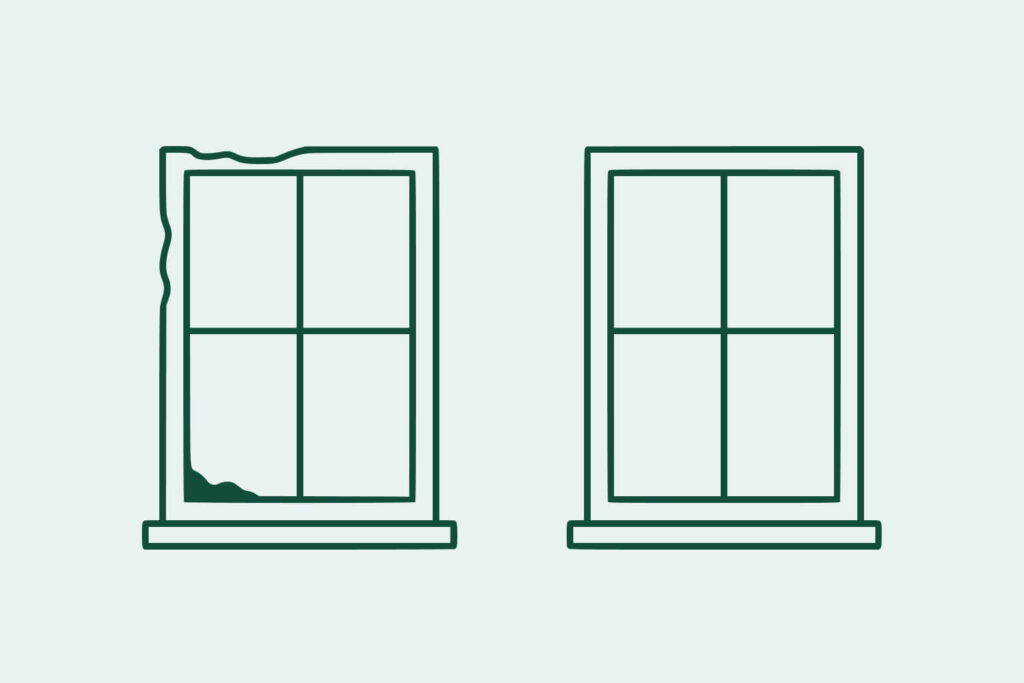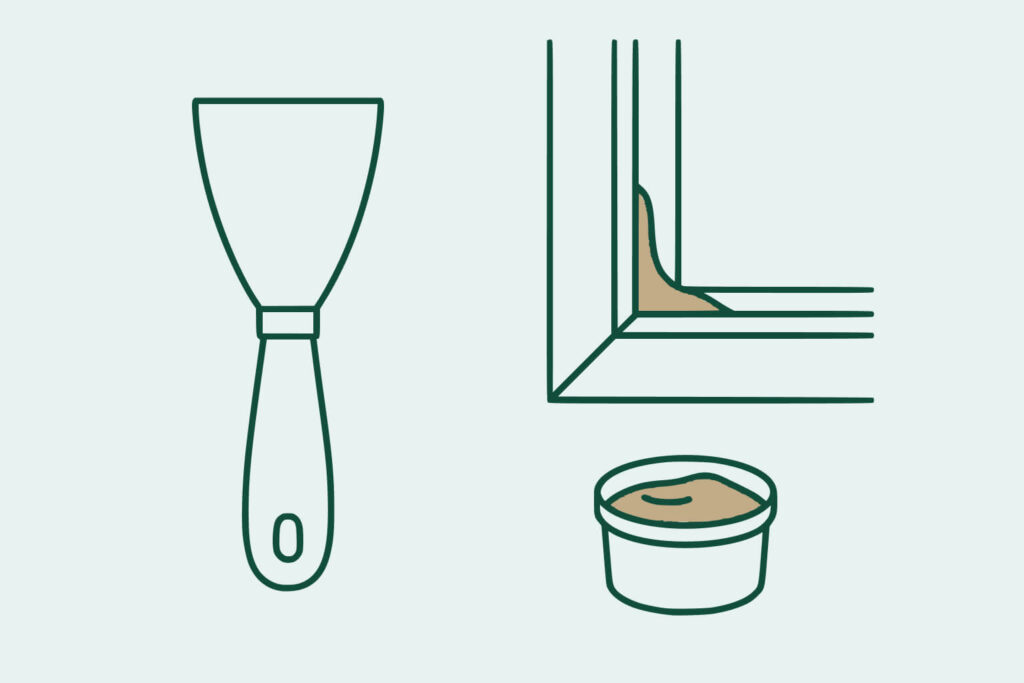Essential Maintenance Tips to Extend Your Timber Windows’ Lifespan
Regular maintenance is the cornerstone of timber window longevity, yet it’s often overlooked until problems become apparent and costly to address. Well-maintained timber sash windows can last for centuries, as evidenced by countless examples in historic buildings across the UK. However, neglected windows can deteriorate rapidly, leading to expensive repairs or premature replacement that could have been avoided with proper care.
Understanding the principles of timber window maintenance and implementing a systematic approach to care will not only extend your windows’ lifespan but also maintain their performance, appearance, and value. The key lies in prevention rather than cure – addressing minor issues before they develop into major problems that require professional intervention.
Effective maintenance doesn’t require extensive technical knowledge or expensive tools, but it does demand consistency and attention to detail. By incorporating window care into your regular home maintenance routine, you can avoid many of the common problems that affect timber windows and ensure they continue to provide excellent service for decades to come.
Understanding the Principles of Timber Window Care
Before diving into specific maintenance tasks, it’s important to understand the fundamental principles that govern timber window care. Timber is a natural material that responds to environmental conditions, and successful maintenance works with these natural characteristics rather than against them.
Moisture management represents the most critical aspect of timber window maintenance. Timber naturally absorbs and releases moisture in response to humidity changes, and this movement is generally beneficial for the material’s long-term health. However, excessive moisture or prolonged exposure to dampness can lead to rot, decay, and structural problems.
The key is maintaining appropriate moisture levels – timber windows perform best when the moisture content remains between 12-18%. Below this range, timber can become brittle and prone to cracking, whilst above this range, conditions become favourable for fungal growth and rot development.
Protection from the elements is equally important. Whilst timber windows are designed to withstand weather exposure, the protective coatings that shield the timber from direct contact with moisture are crucial for long-term durability. Paint and varnish systems don’t just provide aesthetic appeal – they form essential barriers that prevent water ingress and UV damage.
Regular operation of sash windows is also beneficial for their health. Windows that are opened and closed regularly tend to maintain better sealing and mechanical function than those left permanently closed. The movement helps distribute lubricants, prevents paint from bonding surfaces together, and allows moisture to escape from the window structure.
Seasonal Maintenance: A Year-Round Approach
Implementing a seasonal maintenance routine ensures that your timber windows receive appropriate care throughout the year, addressing the different challenges and opportunities each season presents.
Spring Maintenance: Inspection and Cleaning
Spring represents the ideal time for comprehensive window inspection and cleaning after the harsh winter months. Begin with a thorough visual inspection of all windows, looking for any damage that may have occurred during winter storms or freeze-thaw cycles.
Check for loose or damaged putty around glazing, paying particular attention to areas where water might have pooled or frozen. Look for any new cracks in the timber, paint blistering or peeling, and signs of moisture ingress such as staining or discolouration.
Clean all window surfaces thoroughly using appropriate materials and techniques. For the timber frames, use a mild detergent solution and soft brush to remove dirt and grime without damaging the paint surface. Avoid high-pressure washing, which can force water into joints and cause more harm than good.
Clean the glass using traditional window cleaning methods – a squeegee and appropriate cleaning solution will achieve better results than modern spray cleaners, which can leave residues that attract dirt. Pay attention to the glazing bars and mullions, where dirt and debris often accumulate.
Spring is also an excellent time to lubricate all moving parts. Apply appropriate lubricants to sash cords, pulleys, catches, and hinges. Use traditional materials like linseed oil or beeswax-based products that are compatible with timber and won’t attract dirt or cause long-term problems.
Summer Maintenance: Repairs and Improvements
The warm, dry conditions of summer provide ideal opportunities for repair work and improvements that require good weather conditions. This is the optimal time for any painting or varnishing work, as the timber will be at its driest and most stable.
Address any minor timber repairs identified during spring inspection. Small areas of rot or damage can often be repaired using wood hardeners and fillers, preventing the need for more extensive repairs later. Ensure all repairs are properly primed and painted to match the existing finish.
Summer is also the ideal time to implement draught proofing improvements or undertake more extensive maintenance projects. The stable weather conditions allow for proper curing of paints and sealants, ensuring optimal performance.
Consider having professional maintenance work undertaken during summer months when contractors are more readily available and weather delays are less likely. This might include sash cord replacement, mechanical adjustments, or comprehensive repainting programmes.
Autumn Maintenance: Weatherproofing and Preparation
Autumn maintenance focuses on preparing your windows for the challenging winter months ahead. This involves checking and improving weather sealing, addressing any minor issues before they’re exacerbated by winter conditions, and ensuring all protective systems are functioning effectively.
Inspect and maintain all weatherstripping and draught proofing systems. Replace any damaged or worn seals, and ensure all draught proofing remains properly positioned and effective. This preparation work will pay dividends in comfort and energy efficiency during the winter months.
Check the condition of all paint and protective coatings, paying particular attention to areas exposed to driving rain or severe weather. Touch up any minor paint damage to prevent water ingress during winter storms.
Ensure all drainage systems around windows are functioning properly. Clear any blocked weep holes or drainage channels, and check that water can drain away from window sills and frames effectively. Poor drainage is a major cause of timber window problems and should be addressed promptly.
Winter Maintenance: Monitoring and Minor Adjustments
Winter maintenance is primarily about monitoring window performance and making minor adjustments as needed. The challenging weather conditions make this an inappropriate time for major maintenance work, but vigilant observation can prevent minor issues from becoming major problems.
Monitor windows for condensation problems, which can indicate inadequate ventilation or failing seals. Excessive condensation can lead to timber damage and should be addressed through improved ventilation or humidity control.
Check window operation regularly, as timber movement due to moisture changes can affect how smoothly sashes operate. Minor adjustments to catches or gentle easing of tight spots can maintain smooth operation throughout the winter months.
Keep windows clear of snow and ice accumulation, which can cause damage when it melts and refreezes. Gently remove snow buildup from sills and frames, but avoid using sharp tools that might damage the timber or paint.
Essential Daily and Weekly Maintenance Tasks
Beyond seasonal maintenance, certain tasks should be performed regularly to maintain optimal window performance and identify problems early.
Regular Operation is one of the most beneficial things you can do for your timber windows. Open and close each window at least weekly, even during winter months when you might prefer to keep them closed. This regular movement prevents paint from bonding surfaces together, distributes lubricants, and allows you to monitor the window’s mechanical condition.
When operating windows, pay attention to how they feel. Smooth, easy operation indicates good condition, whilst sticking, binding, or unusual resistance may indicate developing problems that need attention. Address operational issues promptly before they worsen.
Condensation Management requires daily attention during humid periods or when indoor heating creates temperature differentials. Wipe away excessive condensation promptly to prevent it from soaking into timber surfaces or pooling in areas where it can cause damage.
Ensure adequate ventilation in rooms with timber windows, particularly in kitchens, bathrooms, and other areas where humidity levels are naturally high. Good air circulation helps prevent condensation problems and maintains healthy moisture levels in the timber.
Visual Monitoring should become a habit whenever you’re near your windows. Look for changes in appearance, new cracks or gaps, paint deterioration, or any other signs that might indicate developing problems. Early detection allows for prompt intervention before issues become serious.
Tools and Materials for Effective Maintenance
Having the right tools and materials readily available makes window maintenance more efficient and effective. You don’t need an extensive toolkit, but certain items are essential for proper care.
Cleaning Supplies should include mild detergent, soft brushes of various sizes, clean cloths or sponges, and a traditional window cleaning kit with squeegee and appropriate cleaning solution. Avoid harsh chemicals or abrasive materials that can damage timber or paint surfaces.
Lubricants and Treatments are crucial for maintaining moving parts and protecting timber surfaces. Traditional materials like linseed oil, beeswax, and lanolin-based products are generally preferable to modern synthetic alternatives, as they’re more compatible with historic materials and less likely to cause long-term problems.
Basic Repair Materials should include wood filler, primer, and touch-up paint that matches your window finish. Having these materials on hand allows you to address minor damage promptly before it worsens.
Inspection Tools such as a sharp knife or awl for probing suspect timber, a torch for examining dark areas, and a moisture meter for checking timber moisture content can help you assess window condition accurately.
Identifying When Professional Help is Needed
Whilst regular maintenance can prevent many problems, it’s important to recognise when issues require professional expertise. Attempting repairs beyond your skill level can sometimes cause more damage than the original problem.
Structural Issues such as significant timber rot, loose joints, or frame distortion typically require professional attention. These problems involve the structural integrity of the window and need specialist knowledge and tools to address properly.
If you discover soft, spongy timber during your inspections, or if joints show significant movement or gaps, consult with professionals who specialise in timber window restoration. Early professional intervention can often prevent the need for more extensive and expensive repairs later.
Mechanical Problems such as broken sash cords, damaged pulleys, or severely binding sashes often require disassembly of the window mechanism. Whilst some mechanically inclined homeowners can tackle these repairs, the complexity and potential for damage make professional repair advisable for most people.
Glazing Issues involving broken glass, extensive putty failure, or problems with the glazing system should generally be handled by professionals. Proper glazing techniques require specific skills and materials to ensure weather-tight, long-lasting results.
Creating a Maintenance Schedule
Developing a written maintenance schedule helps ensure that important tasks aren’t forgotten and provides a record of work completed. This documentation can be valuable for warranty purposes, insurance claims, or when selling your property.
Create a simple checklist for each season that includes all relevant tasks for your specific windows. Not all windows will have identical requirements, so tailor your schedule to address the particular needs and conditions of each window.
Keep records of maintenance work completed, including dates, materials used, and any problems identified. This information helps track the effectiveness of your maintenance programme and can guide future decisions about repairs or improvements.
Consider photographing your windows annually from the same positions to create a visual record of their condition over time. These photographs can help identify gradual changes that might not be apparent from day-to-day observation.
The Economics of Preventive Maintenance
Regular maintenance represents an investment that pays significant dividends in avoided repair costs, extended window life, and maintained property values. Understanding the economic benefits can help motivate consistent maintenance efforts.
The cost of regular maintenance is typically a fraction of major repair or replacement costs. Annual maintenance might cost £50-100 per window, whilst major restoration can cost £400-800 per window, and replacement can exceed £1,000 per window.
Well-maintained timber windows can last indefinitely with periodic restoration, whilst neglected windows may require replacement within 20-30 years. The cumulative cost savings of maintenance over the long term are substantial.
Maintained windows also contribute to property values, particularly in period properties where original features are valued by buyers. Neglected windows can significantly detract from a property’s appeal and value.
Energy efficiency benefits from well-maintained windows also contribute to ongoing cost savings through reduced heating bills. Properly sealed and draught-proofed windows can significantly reduce energy consumption compared to neglected alternatives.
Environmental Benefits of Proper Maintenance
Maintaining existing timber windows rather than replacing them provides significant environmental benefits that align with growing awareness of sustainability issues in construction and home improvement.
Extending the life of existing windows through proper maintenance avoids the environmental impact of manufacturing replacement windows and disposing of old ones. The embodied energy in existing timber windows represents a valuable resource that maintenance preserves.
Well-maintained timber windows can achieve excellent thermal performance, reducing energy consumption for heating and cooling. This contributes to lower carbon emissions and reduced environmental impact from energy use.
Using traditional, natural materials for maintenance work supports sustainable practices and reduces reliance on synthetic alternatives that may have greater environmental impact in their production and disposal.
By maintaining timber windows, homeowners contribute to the preservation of traditional building skills and the continued viability of specialist trades that understand historic construction methods and materials.
Effective maintenance of timber windows is both an art and a science, requiring understanding of materials, attention to detail, and consistency of effort. However, the rewards – in terms of performance, longevity, cost savings, and environmental benefits – make this investment of time and effort highly worthwhile.
For homeowners who prefer professional maintenance services or need advice on specific issues, consulting with experienced timber window specialists can provide valuable guidance and ensure your windows receive the expert care they deserve.




